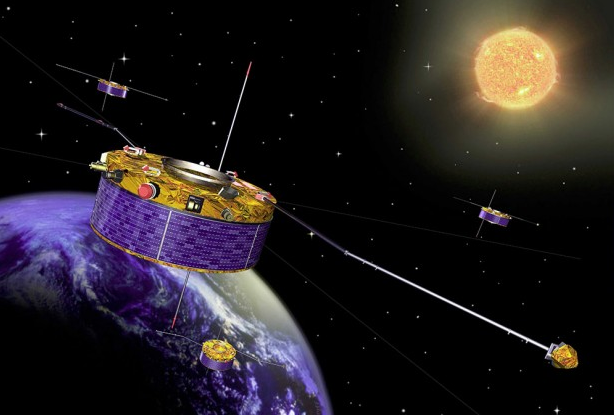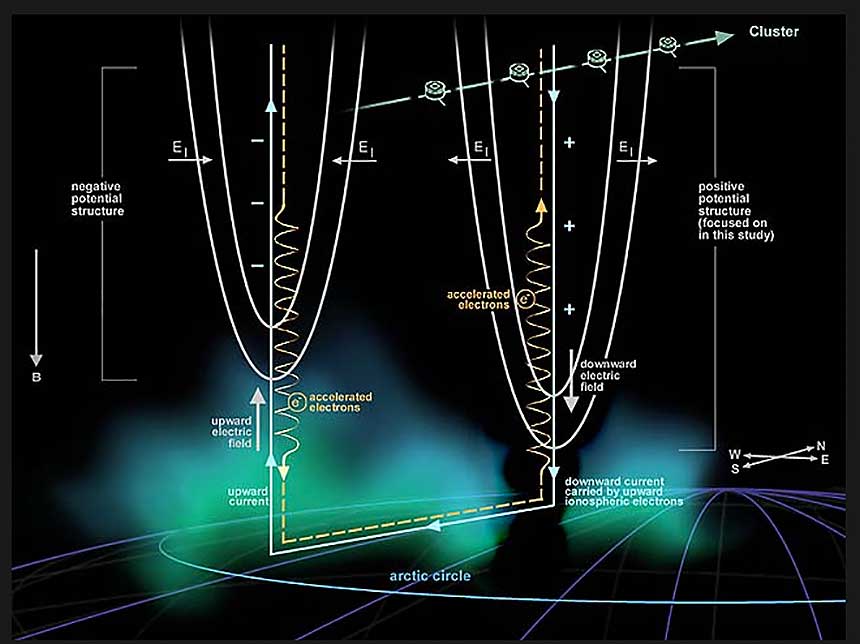It was a close call in space this week when two of the European Space Agency’s (ESA) four identical Cluster satellites provided researchers with a rare opportunity to collect valuable information with unprecedented detail.

Image Caption: Artist's impression of the Cluster constellation. ESA's mission Cluster consists of four identical spacecraft flying in formation between 19,000 and 119,000 km above the Earth. They study the interaction between the solar wind and Earth’s magnetosphere, or the Sun-Earth connection in 3D. Credit: ESA
According to a statement released by the organization on Friday, a pair of the probes achieved their closest-ever separation on September 19. The satellites, which have been probing the Earth’s magnetosphere in three dimensions since 2000, closed to within just four kilometers of one another while orbiting 23,000 kilometers above the Earth.
“We’re optimizing the Cluster formation so that the separation between Cluster 1 and the duo of Cluster 3 and 4 —which are on almost identical orbits—is kept below 100 km when the formation crosses Earth’s magnetic equator,” explained Detlef Sieg, who works on Cluster flight dynamics at ESA’s European Space Operations Center (ESOC) in Darmstadt, Germany.

“When we started Cluster, we believed that a separation of 500 km was the smallest required by science,” said ESA Cluster Mission Scientist Phillipe Escoubet. “However, it turns out that the physical processes at very small scales are very important and this is why we have decided to decrease the separation distance to more than a factor 100 to just 4 km, as it will allow us to study electromagnetic waves in the radiation belts with unprecedented detail.”
The ESA describes Cluster as a constellation of four spacecraft that orbit Earth in formation. They record and transmit detailed information about the impact that solar wind—the perpetual stream of subatomic particles given out by the Sun—has on Earth’s communication satellites and power stations. The mission was originally supposed to last until December 2005, but has been extended twice and continues to run.
The formation of the satellites will keep three of the four probes together at lower altitudes, optimizing the range of scientific observations they are capable of, ESA explained on Thursday. Thursday’s closest-ever approach, which involved Cluster 1 and Cluster 3, took place around 09:12 GMT and surpassed a record set on August 30.
The primary challenge the agency faced in achieving the formation was making sure that the satellites did not collide, as well as avoiding any maneuvers that would interrupt science activities.
Sieg said that the mission was able to determine the satellites’ orbits with more than a 0.1-kilometer accuracy, so he and his colleagues were confident that they would be able to “achieve the formation with sufficient allowance for safety.”
The current formation will be maintained until early November, at which time they will be separated by more than 1,000 kilometers, the agency noted.

